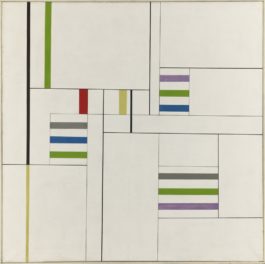In conjunction with the exhibition Cave Temples of Dunhuang: Buddhist Art on China’s Silk Road, musicians from the Silk Road Ensemble are in residence at the Getty to create pop-up musical performances inspired by the art and replica caves on view.
In this performance created specifically for video, Kojiro (Ko) Umezaki presents “Empty Bell,” a traditional melody for the shakuhachi (Japanese bamboo flute). He was inspired to choose this music—which traces its origins to Japanese mendicant monks of the Fuke school—by the sculptural depictions of similar monks in the life-size replica of Cave 285, which is on view at the Getty.
Look for more videos coming soon featuring other artists from the Ensemble, playing music inspired by the caves.
More to Explore
Cave Temples of Dunhuang: Buddhist Art on China’s Silk Road exhibition information
Silk Road Ensemble Interprets Dunhuang through Spontaneous Live Music Iris article
Silk Road Ensemble musician and instrument profiles
Art, History, and Conservation of the Cave Temples of Dunhuang video
Virtual Tour of Cave 285, Mogao Grottoes
Transcript


[Shakuhachi instrumental music plays throughout]
KOJIRO UMEZAKI: The shakuhachi actually was played by wandering monks in Japan, maybe not necessarily to play music, but to use it as a tool for practicing breathing and meditation.
I want to tell you about a story behind the piece I’ve been playing. The piece is called “Kyorei,” “Empty Bell.” And imagine this: There is a monk by the name of Fuke, who started the practice of meditating with this instrument. He has some followers, and he comes into town very often ringing a bell, and saying things that the people in the town are, hmmm, they’re not so sure about, a little bit off. He’s considered to be an eccentric.
One day he comes into town, brings his followers with him, and a sarcophagus, and he says, “I’m going to get into this sarcophagus. I’m going to ask my followers to shut it, nail it down. And the next day, everybody come, open it up, and you’ll see that I’m no longer there.”
Now he’s known to say a few odd things, so the townspeople are a little bit like, “Hmm, yeah, he says this stuff all the time.”
But sure enough, the next day the people come. They open up the sarcophagus, and he’s no longer there. But at that moment, they hear his bell ringing from somewhere up in the sky.
And so, that moment is commemorated, it is said, by one of his followers into this piece called “Kyorei.”
And what I really like about being able to play in this space, in this cave, is that we have representatives of, for example, mendicant monks. And you can see here, it’s got beautiful, beautiful, sort of decorative attire, but it’s actually patchwork because they’re going around and collecting little pieces of fabric that actually put together the attire. And so it represents the practitioner. At the same time, you have depictions of these divine creatures who are up in the wind, up in the sky, making music, as a matter of fact, in some instances, representing some sort of Buddhist notion of perhaps transcendence and the divine up in the air.
[Shakuhachi instrumental music continues to the end]
[Shakuhachi instrumental music plays throughout]
KOJIRO UMEZAKI: The shakuhachi actually was played by wandering monks in Japan, maybe not necessarily to play music, but to use it as a tool for practicing breathing and meditation.
I want to tell you about a story ...
[contentblock id=3 img=gcb.png]




Comments on this post are now closed.